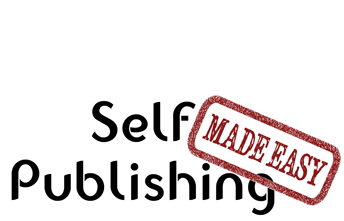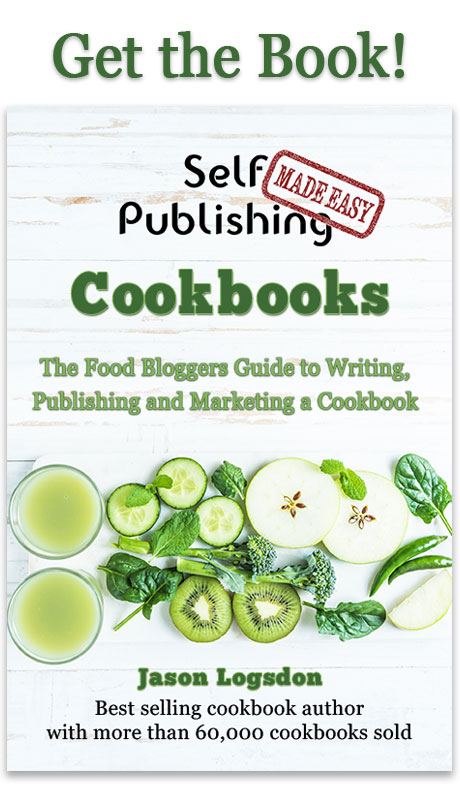Existing Users Sign In
Existing users please sign in to continue reading this article.
Welcome to Self Publishing Made Easy!
Publishing a Cookbook can be
Challenging
We will make the process clear and easy, allowing you to focus on creating a remarkable cookbook without any distractions.
Easily Navigate The Publishing Process
Benefit From a Community of Other Self Publishers
Maximize Your Distribution and Profit
We are the leading cookbook self publishing member site on the internet and are here to help you navigate the sometimes tricky path of self publishing. We provide step by step guidance to publishing your own cookbook as well as access to our active and helpful community of self publishers.
Or Get More Information about Self Publishing Made Easy
Self Publishing Versus Traditional Publishing
Click here to get great self publishing content via emailSelf publishing is a very different processes than publishing through a traditional publisher. Both methods have their advantages and disadvantages and only you can determine the method that will work best for you.
Cookbook Royalties
Royalties are simply the amount of money the author gets paid every time a book is sold and they are one of the main concerns for many authors. There are a few differences between royalties for self published and traditionally published books.
For traditionally published books royalties are negotiated ahead of time and are usually 1% to 10%, depending on how established an author is. For most authors the 5% to 8% range will apply. This is usually based off the profit of each book sold, not the list price.
Royalties for self published books tend to be much higher than for traditionally published books. They are almost always 100% of the profit of each book, which is often in the 20% to 40% of the list price. You also have control over how large your royalties are when self publishing by changing the list price, allowing you to maximize profit or sales, depending on the goals of your book. For more information you can read our guide to how royalties work.
Cookbook Advances
Advances are the royalties an author gets paid up front. This is used to help offset the costs of creating a book. It's important to remember that it is an advance on royalties, not a bonus. So if you get a $10,000 advance and end up selling books worth $12,000 in royalties, you will get an additional check for only $2,000. Some publishing contracts will also specify that if your royalty isn't met that the author has to return the excess money.
Advances don't exist in self publishing unless you externally finance your book. Most traditional advances run from $1,000 to $10,000 for a normal author who is just starting out.
Control of Content and Design
One of the biggest advantages to self publishing is that you have complete control over all aspects of your book. When working with a traditional publisher they will often specify the cover, title, page layout, photography, and have input about general or specific subject matter. When you self publish you can use whatever you like so it matches your vision, potentially saving yourself lots of frustration.
Remember though, this can be a negative as well. Cookbook publishers have extensive experience determining what works for a cover, what page designs are ideal, and what content sells. When self publishing you will be relying on yourself and not their years of experience. You can supplement a lot of this knowledge with outside expertise but it will cost you money upfront and you are ultimately still responsible for every decision made.
Another negative of self publishing is that most self publishing platforms, especially print on demand printers, have more limited options for your book. You will have to go with a more standard book size, cover, and design.
Write the Book, Not Proposals
One of the biggest challenges to becoming traditionally published is getting a publisher to accept you or your book. The vast majority of the time this requires you to obtain a literary agent who will work with you to create a lengthy proposal summarizing your book. The agent will then "shop" your proposal in an attempt to convince publishers that your subject is worth publishing. This process can easy take months and has a high probability of coming up empty. Keep in mind that publishers are looking for authors who already have an audience. One positive aspect of this process is that if you do find a publisher it is a reasonable validation that the idea for your book is probably a sellable one.
With self publishing you can spend that time writing the actual book and publishing it. It is very empowering to be able to pick yourself and not wait for other people to give you permission.
Distribution
One of the biggest negatives with self publishing is that you have to open the majority of distribution channels yourself. Some are easy to get into, such as most online book sellers, but some are almost impossible to get into, like large mega-chain book stores. Many smaller bookstores will be happy to carry your book, especially if they are local to you and like the topic, but you still have to actively find these stores, convince them to carry your book, and maintain that relationship. This lack of distribution is one of the main disadvantages of self publishing books, however, it is offset in many ways by the much higher royalties.
Continued Distribution
Many traditionally published books print a specific number and then go out of print unless there is a large enough demand for them. This can greatly curtail sales years down the road. With a self published book it remains available until you decide not to carry it anymore.
Five years after I first published it my first book was still selling a handful of copies every month. I eventually "retired" it because the quality wasn't up to my more recent books but it brought in an extra grand or two through the trickling in of sales long after I was done promoting it.
Speed of Publishing
Once the book is written, the process to get it available in stores is very different for self publishing and traditional publishing. A traditional publisher will usually take 4 to 8 months to finalize the book, print it, and set up the marketing. A self published book will usually be available on Amazon in a few weeks. This fast turn around can be a big bonus. You can also update your content if needed with a self published book, something that is usually impossible for a traditionally published one.
The more books you publish the faster the process will go. After publishing 9 books I know the process really well and from the time I finish writing my book and designing the cover it takes me 4-5 days to get on Amazon. Then only another week to convert the book to an epub and get in the Kindle, iTunes, and Nook stores.
Marketing
One of the biggest jobs of a traditional publishing company is the marketing and distribution of books. While I've discussed the distribution question above, the marketing is usually not as disparate between self published and traditionally published books. Granted, if you are a big-name author you will get a lot of marketing and promotional support from the company, but most small- to medium-sized authors are expected to do much of their own marketing.
Prestige
There is something about publishing a book that many people find impressive and it gives a certain cachet to the author. This same prestige doesn't always translate to self published authors. Even though the quality of self published cookbooks and novels has increased drastically some people still feel like it's not a "professional" thing to do. This lack of prestige can also translate to some distribution channels or professional reviewers who will limit themselves to traditionally published books. I've found there are enough people willing to give self published books a shot that it covers for those that don't.
Some people get very excited when they hear I'm a writer and have published multiple books. However, when finding out I'm self published I've had more than one person reply with "oh, well that's too bad". I tend to not want the validation of those types of people so I try not to let it affect me, but it's something to be aware of.
Book Reviews
It can be hard to get a review in a big magazine or newspaper through self publishing.



